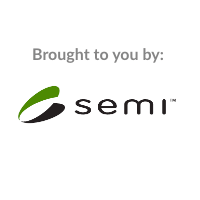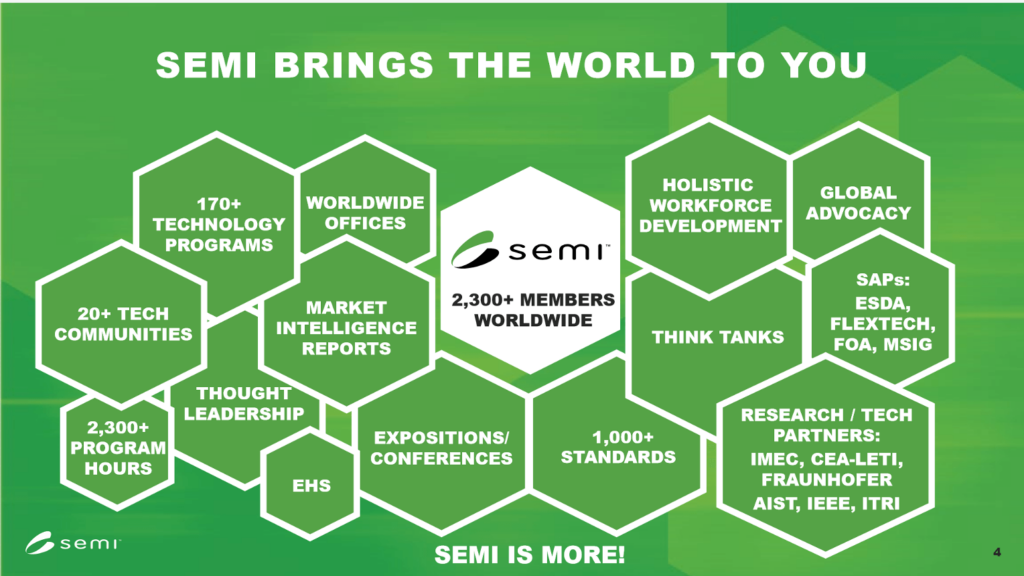 SEMI, together with FlexTech, the MEMS & Sensors Industry Group, the Nano-Bio Materials Consortium (NBMC) and NextFlex, held FLEX/MSTC 2020 at the DoubleTree in San Jose from February 24 to 27. Executives from above industry organizations and their member companies presented current capabilities of flexible hybrid electronics (FHE), MEMS and sensors and outlined their benefits, using application examples.
SEMI, together with FlexTech, the MEMS & Sensors Industry Group, the Nano-Bio Materials Consortium (NBMC) and NextFlex, held FLEX/MSTC 2020 at the DoubleTree in San Jose from February 24 to 27. Executives from above industry organizations and their member companies presented current capabilities of flexible hybrid electronics (FHE), MEMS and sensors and outlined their benefits, using application examples.
Not yet impacted by the current COVID-19 related restrictions, FLEX/MSTC was well attended. It also hosted about 50 exhibitors and gave students opportunities to explain their research topics. On the following day, the students were invited on a tour of the NextFlex facility in San Jose and attended several parallel sessions with expert presentations at SEMI’s HQ.
…Nor Will it Be as Slow Again!
Dave Anderson, president SEMI Americas, opened the conference declaring that “Change has never been as fast, nor will it be as slow again!” In my view, that’s a very compelling reason to connect at industry conferences and collaborate across the entire supply chain.
Ajit Manocha, SEMI CEO, outlined how our industry has changed. He emphasized that SEMI is attracting more and more previously independently operating industry organizations as strategic partners and has now more than 2300 member companies worldwide. See important SEMI KPIs in Figure 1.

Manocha introduced Tim Brosnihan as the new MEMS and Sensors Industry Working Group (MSIG) director and proudly announced that SEMI will celebrate 50 years of serving our industry at SEMICON West, July 21 to 23.
Keeping Pace with Rapid Change
The following keynotes not only described the latest application requirements but also showed innovative solutions that allow companies to keep pace with this rapid change.
Anil Rachakonda, VP at CO-PACE, a Continental subsidiary, did not talk about the 100 million tires the parent company sells per year, but substantiated Anderson’s opening remarks beautifully. He explained that the automotive industry is driven by four major forces:
- The ownership model is changing to car sharing
- Gasoline-powered engines are being replaced by battery-powered electric motors
- Human drivers are being replaced by computers in autonomous vehicles,
- The user experience and creature comforts are becoming the main differentiators for vehicles.
Rachakonda emphasized that a broad range of application-specific software is driving the popularity of smartphones. He expects a similar trend, supported by cameras, displays and various media hardware, emerging for the automotive industry.
Antti Vasara, from VTT in Finland, explained that this 2000 people non-profit company is funded by the government to think beyond the obvious and develop:
- Knowledge-intensive products and services
- Smart industry and energy systems
- reen solutions to save resources and the environment.
He talked about TactoTek, a VTT subsidiary, and their work as an example. They develop sustainable electronics for roll-to-roll manufacturing of sensors, micro fuel cells and other flexible electronics on, what he called “active paper”.
Michael Wiemer, who cofounded Mojo Vision in 2015, presented this young and ambitious company’s focus: A contact lens that elevates your vision. Grain-size displays, integrated into contact lenses, provide users the view of augmented reality, e.g. blending driving data and road conditions into a person’s perspective. Wiemer said that $100 Million funding will enable them to execute their mission: Provide invisible computing in support of these smart contact lenses.
Zhenan Bao, Professor of Chemical Engineering and, by courtesy, Material Science and Engineering at Stanford, talked about her skin-inspired work with stretchable, self-healing dielectric materials, semiconductors and conductors. She also is a prolific writer. Springer’s Nature magazine often publishes her work. Bao also contributes significantly to Stanford’s eWARE program and many other R&D efforts.

The following panel discussion was moderated by SEMI’s Melissa Grupen-Shermansy and Tim Brosnihan. The manufacturing and supply chain-related questions from the audience and the panelists’ answers made the difference between academic research and high-volume manufacturing very clear to me. It’s difficult to transfer great research at universities into a high-volume manufacturing environment. That, in my eyes, is another currently weak link in our supply chain.
After these very informative messages to both FLEX and MSTC attendees, the following dual-track program focused on flexible hybrid electronics and MEMS / Sensors-specific topics. Allow me to focus here on a few of the many very informative presentations, then summarize my general impressions.
FLEX/MSTC Presentations
Andrew Kelly from Cirtec Medical mentioned that batteries can consume half the volume of a device. Harvesting energy from sunlight, vibrations, temperature differences or in other ways is gaining importance. In addition, exchanging batteries is time consuming, costly and single-use batteries are bad for the environment.
Bui Hai, Lam Research, outlined the company’s low-temperature (< 200°C) PECVD process for 200 / 300 mm wafers and emphasized that they were able to overcome typical challenges, like film reliability problems and low throughput.
Angela Franklin, from OKMETIC in Helsinki, Finland, explained why especially bulk acoustic wave (BAW) filters benefit from using Silicon-on-Insulator (SOI) substrates and even more from cavity SOI wafers OKMETIC offers in 150 and 200 mm.
Microtech Ventures Paul Pickering engaged executives from four venture capital firms – Band of Angels, Applied Ventures, Bosch and Serendibite Partners – to listen to and critique presentations from four start-up executives. This “VC-pitches training” session was very well received by the audience.
Art Wall from NextFlex presented how they transformed a rigid Arduino Mini board into a function-equivalent flexible hybrid implementation and further into a role-to-role, lower cost and high-volume manufacturing-ready solution.
Jabil’s Dan Gamota emphasized in his presentation the importance of models, describing materials characteristics and manufacturing flow capabilities, as well as EDA tools to simulate, design and verify high-volume flexible hybrid electronics (FHE) designs. He encouraged the development of FHE design kits to reduce development time and unit cost of such electronic devices.
Special Programs on Thursday
Instead of joining a tour of the impressive NextFlex facility on Thursday morning, I opted to attend several “Lab to Fab” presentations at SEMI’s HQ. Four current and former high-level executives outlined their companies’ paths from compelling ideas to high-volume and profitable products. Robert Praino, COO, and Co-Founder of Chasm Advanced Materials, Michael McCreary, Chief Innovation Officer at E Ink Corporation, Dalen Keys from Dupont’s Display division and Asad Khan, CEO of Kent Displays, Inc, shared what they experienced during the long and arduous paths from idea to a successful product. To summarize what I took away from these expert presentations: It’s all about hard work and a well-coordinated supply chain!
Personal Takeaways
For me the most memorable message of the entire event was in Dave Anderson’s welcome: “Change has never been as fast, nor will it be as slow again!” I couldn’t agree more with this assessment of our industry’s past and prediction of our future and hope that our leaders will accept this challenge.
Based on what I experienced in almost five decades in the semiconductor business, I want to suggest: More horizontal and especially vertical coordination and cooperation across the industry to accelerate product rollouts and lower development as well as unit cost. That’s why industry organizations are becoming even more important for our industry’s success. They can connect potential partners across the globe, coordinate cooperation and encourage innovation – all essential elements for our industry’s growth and prosperity.
Also, let me recap Ajit Manocha’s invitation to SEMICON West, in San Francisco, July 21 to 23, 2020, to celebrate SEMI’s 50th birthday and to make further step towards improving coordination and cooperation with essential supply chain partners.
Last, but not least: FLEX/MSTC 2021 will be again at the Doubletree in San Jose, from Feb. 22 to 25.
Thanks for reading…Herb


















